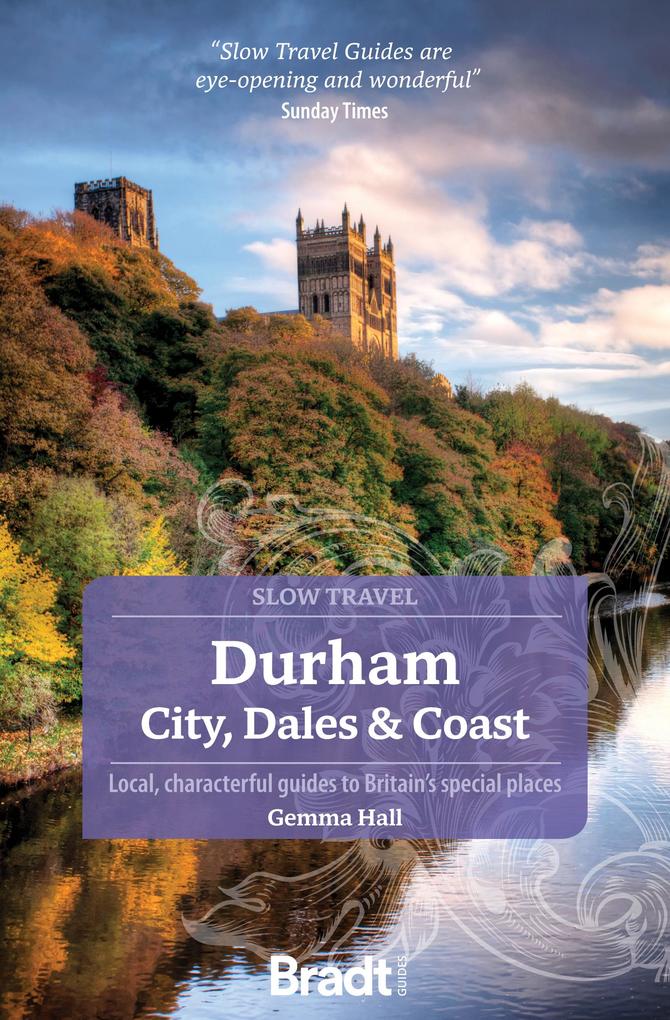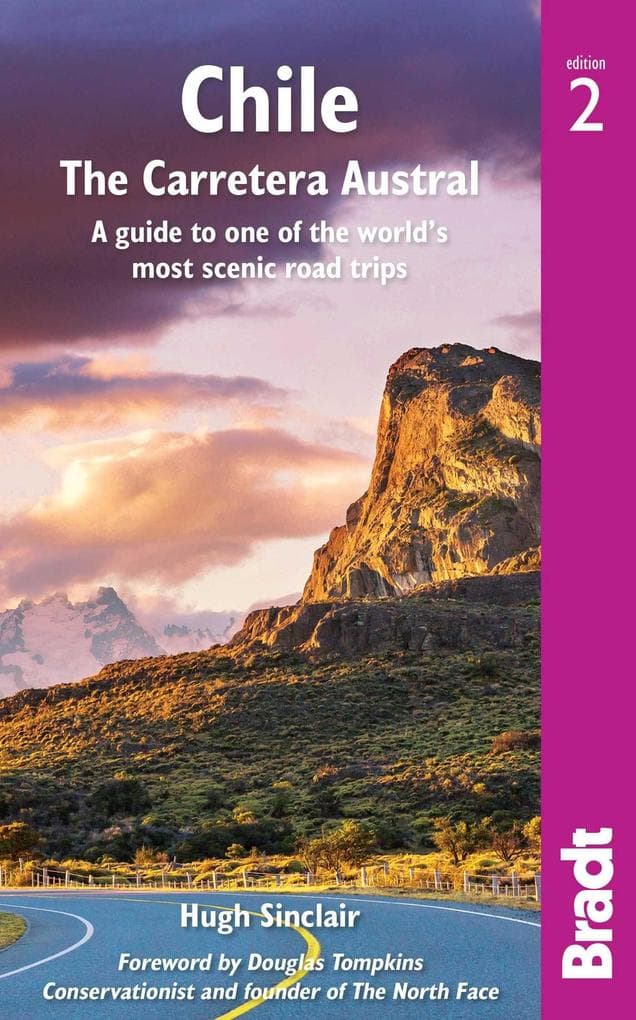Bücher versandkostenfrei*100 Tage RückgaberechtAbholung in der Wunschfiliale

Zustellung: Do, 03.04. - Di, 08.04.
Versand in 3 Wochen
VersandkostenfreiBestellen & in Filiale abholen:
Travel writer Gemma Hall explored Durham extensively by bicycle and on foot to produce this brand new title in Bradt s award-winning series of Slow travel guides to UK regions. Walkers, cyclists, wildlife lovers, families, foodies, culture vultures and railway enthusiasts are all catered for, with coverage of a wide range of attractions. As the only comprehensive guidebook to the county, it also contains all the practical information you could need to plan and enjoy time in this delightful, diverse yet under-explored English county. Unexpected treats throng here, from Tanfield Railway (the world s oldest line) to fellside Methodist chapels accessed by remote footpaths crossing silvery burns, and the Bowes Museum, where an automated silver swan comes to life at 2pm every day to `catch a fish. And even well-known sites offer surprises: famed for its cathedral, medieval streets, world-renowned university and 500 listed buildings, the UNESCO World Heritage Site of Durham city is also the birthplace of English mustard. Durham city may be fêted by up to 4. 37 million tourists a year (2019 figures), yet few visitors venture into the county s wider countryside, with its unsung wooded valleys, old mining villages, Heritage Coast Path, and the rugged hills and valleys of Weardale and Upper Teesdale, where national nature reserves harbour thriving meadows filled with relict plants from the last Ice Age. Key heritage attractions such as Castle Barnard s medieval fort and High Force waterfall (one of England s greatest) are described in intimate detail but so too are many places that have never made it into a guide on Durham: lesser-known museums, historical buildings and birdwatching sites. Here too are more remote treats that need tracking down by cycling old railway trails, or on foot, following old packhorse trails to reach abandoned collieries, secluded bathing pools and the display grounds of the black grouse, a rare gamebird. Whether you are keen to visit Roman forts or understand England s industrial heritage, to wander the heathery uplands of Moor House or stride boldly along miles upon miles of coastline, discover Durham with Bradt s unique Slow guide.
Inhaltsverzeichnis
Going Slow in DurhamChapter 1 Durham Introduction, How this book is arrangedChapter 2 Durham CityGetting around, Palace Green: Durham Cathedral and Castle, The Bailey Colleges, Market Place, Along the Wear, Old Elvet and the Miners' Gala, University Botanic Garden, Oriental MuseumChapter 3 Vale of DurhamGetting around, Finchale Priory, Chester-le-Street, Beamish Museum, Tanfield Railway, Lanchester & the Browney Valley, Deerness Valley, Brancepeth, Binchester Roman Fort, Escomb, Bishop Auckland, Shildon & its railway museum, Thrislinton National Nature Reserve, SedgefieldChapter 4 Durham Heritage CoastGetting around, Crimdon, Blackhall Rocks, Easington Colliery and around, Castle Eden Dene National Nature Reserve, SeahamChapter 5 DerwentsideGetting around, Blanchland, Derwent Reservoir, Derwent Gorge and Muggleswick Woods National Nature Reserve, Edmundbyers, Consett, Shotley Bridge, EbchesterChapter 6 WeardaleGetting around, Wolsingham, Hamsterley Forest, Frosterley, Stanhope, Eastgate, Rookhope, Westgate, St John's Chapel, Ireshopeburn, Wearhead, Cowshill, Allenheads, Killhope Lead Mining Museum, NentheadChapter 7 TeesdaleGetting around, Barnard Castle, Bowes Museum, Egglestone Abbey, Rokeby Park, Staindrop and Raby Castle, Cotherstone, Romaldkirk, Eggleston, Middleton-in-Teesdale, Teesdale's reservoirs, Hannah's Meadow Nature Reserve, Newbiggin-in-Teesdale, Bowlees & Gibson's Cave & Waterfall, High Force waterfall, Upper Teesdale National Nature Reserve, Cow Green Reservoir and Cauldron SnoutAccommodationIndex
Warnhinweise
Dieser Hinweis kann lt. Artikel 9 Absatz 7 Satz 2 der GPSR entfallen, da das Produkt auch ohne Anweisungen und Sicherheitsinformationen sicher und wie vom Hersteller vorgesehen verwendet werden kann.
Mehr aus dieser Reihe
Produktdetails
Erscheinungsdatum
10. Februar 2023
Sprache
englisch
Seitenanzahl
304
Reihe
Bradt Travel Guide
Autor/Autorin
Gemma Hall
Verlag/Hersteller
Produktart
kartoniert
Gewicht
346 g
Größe (L/B/H)
193/131/15 mm
ISBN
9781784779498
Entdecken Sie mehr
Bewertungen
0 Bewertungen
Es wurden noch keine Bewertungen abgegeben. Schreiben Sie die erste Bewertung zu "Durham: City, Dales & Coast" und helfen Sie damit anderen bei der Kaufentscheidung.






























